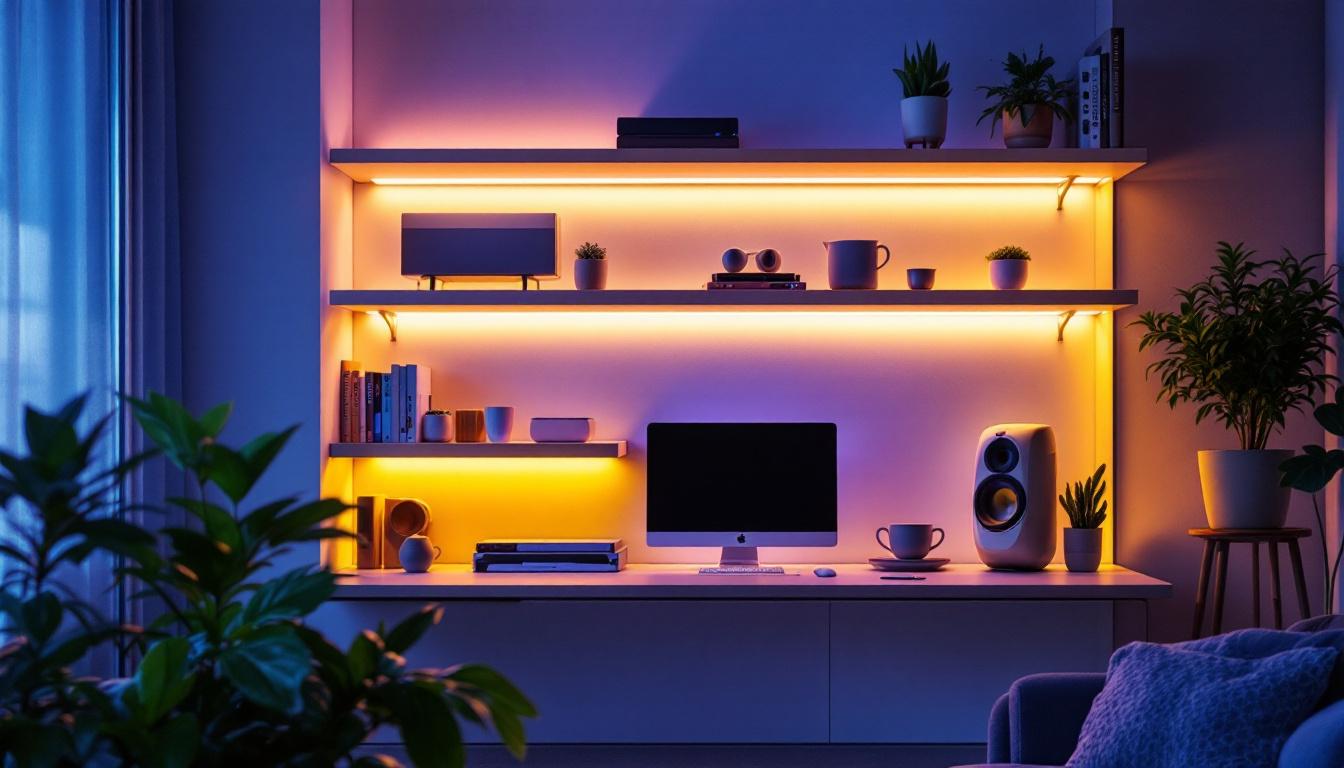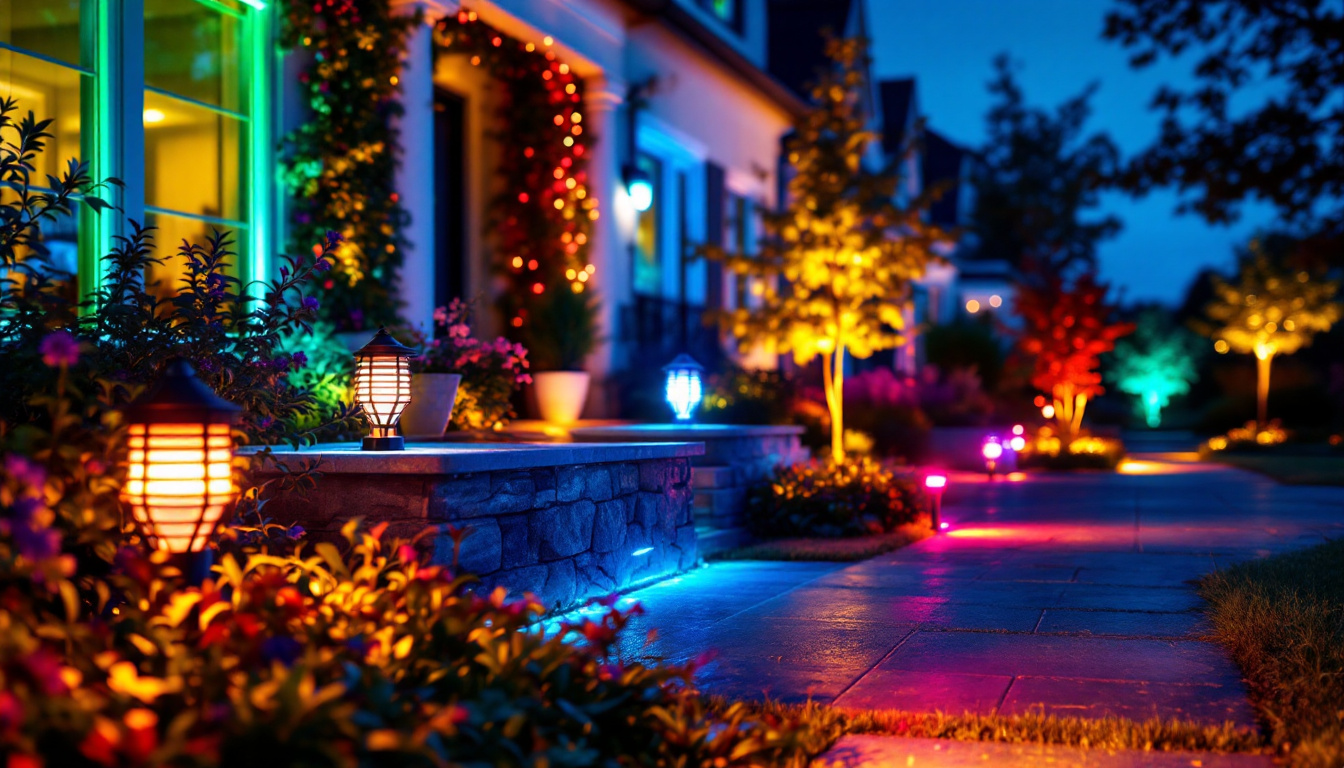
As the demand for energy-efficient lighting solutions continues to rise, LED technology has emerged as a game changer in the field of lighting design. Among the various applications of LED lighting, stairway lighting stands out not only for its aesthetic appeal but also for its functional benefits. For lighting contractors, understanding the advantages of LED stairway lighting can significantly enhance project efficiency and client satisfaction.
LED, or Light Emitting Diode, is a semiconductor device that emits light when an electric current passes through it. Unlike traditional incandescent bulbs, LEDs are highly efficient, converting a greater percentage of energy into light rather than heat. This efficiency translates into lower energy costs and a reduced carbon footprint, making LEDs an attractive option for both residential and commercial lighting projects. Furthermore, the compact size of LEDs allows for innovative designs that can be seamlessly integrated into various architectural styles, providing not only functionality but also aesthetic appeal.
One of the primary benefits of LED stairway lighting is its longevity. LEDs can last up to 25 times longer than traditional bulbs, which means less frequent replacements and reduced maintenance costs for clients. This durability is particularly advantageous in stairway applications, where access can be challenging and time-consuming. Moreover, the consistent performance of LEDs over their lifespan ensures that the quality of light remains high, providing safety and visibility in potentially hazardous areas like staircases.
Another significant advantage is the versatility of LED lighting. Available in various colors, intensities, and designs, LEDs can be tailored to fit any stairway aesthetic, enhancing the overall ambiance of the space. This adaptability allows lighting contractors to offer customized solutions that meet the specific needs of their clients. For instance, warm white LEDs can create a cozy atmosphere in residential settings, while cooler tones might be preferred in modern commercial spaces, showcasing the flexibility of LED technology in meeting diverse design preferences.
Energy efficiency is a crucial consideration for many clients, especially in commercial settings where lighting costs can be substantial. LED stairway lighting consumes significantly less energy compared to traditional incandescent or fluorescent options. This reduction in energy use not only lowers utility bills but also aligns with sustainability goals that many businesses are striving to achieve. In fact, many organizations are now incorporating energy-efficient lighting solutions as part of their corporate social responsibility initiatives, showcasing their commitment to environmental stewardship.
Additionally, the long lifespan of LEDs contributes to overall cost savings. By reducing the frequency of bulb replacements and maintenance, clients can allocate resources to other areas of their operations, ultimately improving their bottom line. Furthermore, the lower heat output of LEDs minimizes the load on HVAC systems, leading to additional savings on cooling costs, especially in larger buildings where temperature control can be a significant expense. This multifaceted approach to cost efficiency makes LED stairway lighting not only a smart choice for illumination but also a strategic investment for the future.
When designing LED stairway lighting, several factors must be taken into account to ensure both functionality and aesthetics. Proper placement, brightness levels, and color temperature all play a crucial role in creating a safe and inviting environment.
Effective placement of LED fixtures is essential for maximizing visibility and safety on stairways. Lighting contractors should consider the height and angle of installation to minimize shadows and ensure that each step is well-lit. Common options include recessed lighting in the stair risers, wall-mounted fixtures, or even LED strip lights along the handrails.
Moreover, the layout should take into account the specific use of the stairway. For instance, a stairway in a high-traffic commercial building may require more intense lighting compared to a residential staircase. Understanding the client’s needs and the stairway’s usage patterns is vital for creating an effective lighting design. Additionally, incorporating motion sensors can enhance energy efficiency and safety, automatically illuminating the stairway when movement is detected, thus providing light only when necessary and reducing energy consumption during off-peak hours.
Brightness levels are another critical aspect of stairway lighting. The Illuminating Engineering Society (IES) recommends specific lux levels for different applications, and stairways typically require a minimum of 100 lux for safety. Lighting contractors should ensure that the chosen LED fixtures meet these standards while also considering the overall aesthetic of the space.
Color temperature is equally important, as it can influence the mood and perception of the stairway. Warmer color temperatures (around 2700K to 3000K) create a cozy and inviting atmosphere, making them suitable for residential applications. In contrast, cooler temperatures (4000K and above) can enhance focus and alertness, which may be more appropriate for commercial settings. Furthermore, the use of dimmable LED options allows for flexibility, enabling users to adjust the lighting based on the time of day or specific activities, such as hosting gatherings or simply navigating the stairs at night. This adaptability can significantly enhance the user experience and contribute to a more personalized environment.
Proper installation techniques are crucial for maximizing the benefits of LED stairway lighting. Lighting contractors must be familiar with the specific requirements of LED fixtures and how they differ from traditional lighting options.
LED lighting typically operates at lower voltages, which means that contractors must ensure that wiring is compatible with the chosen fixtures. This may involve using specialized drivers or transformers to convert standard voltage to the required level. Additionally, careful attention must be paid to the electrical load to prevent overloading circuits.
Furthermore, it is essential to adhere to local building codes and regulations during installation. Ensuring compliance not only guarantees safety but also protects the contractor from potential liability issues.
Choosing the right fixtures is a critical step in the installation process. Lighting contractors should consider factors such as the fixture’s lumens output, beam angle, and energy efficiency ratings. Compatibility with dimming systems is another important consideration, as many clients prefer adjustable lighting levels for different times of day or activities.
In addition, contractors should be aware of the various mounting options available for LED stairway lighting. Whether opting for recessed, surface-mounted, or pendant fixtures, the chosen method should align with the overall design and functionality of the stairway.
Although LED lighting is known for its longevity and low maintenance requirements, some basic upkeep is still necessary to ensure optimal performance. Lighting contractors should educate clients on the importance of regular inspections and cleaning to prevent dust and debris from accumulating on fixtures.
To maintain the aesthetic appeal and functionality of LED stairway lighting, regular cleaning is essential. Dust and dirt can significantly reduce light output, creating safety hazards. Contractors can recommend simple cleaning methods, such as using a damp cloth or soft brush to gently wipe down fixtures.
Additionally, clients should be advised to avoid using harsh chemicals or abrasive materials that could damage the fixtures. A proactive approach to maintenance can extend the lifespan of the lighting system and enhance its performance.
Despite their reliability, LED fixtures may occasionally encounter issues. Common problems include flickering lights, uneven brightness, or complete failure. Lighting contractors should be prepared to troubleshoot these issues effectively.
Flickering lights may indicate problems with the electrical supply or compatibility with dimmers. In such cases, checking the wiring and ensuring that the fixtures are compatible with the existing dimming system is essential. Uneven brightness could result from improper placement or the use of mismatched fixtures, which may require a reevaluation of the lighting design.
The market for LED stairway lighting continues to evolve, driven by advancements in technology and changing consumer preferences. Lighting contractors must stay informed about emerging trends to remain competitive and meet client demands.
One of the most significant trends in the lighting industry is the rise of smart lighting solutions. Integrating LED stairway lighting with smart home systems allows for enhanced control and customization. Clients can adjust brightness levels, set schedules, and even change color temperatures through mobile apps or voice commands.
This level of convenience not only improves user experience but also contributes to energy savings. Lighting contractors who offer smart lighting solutions can differentiate themselves in the market and attract tech-savvy clients.
As sustainability becomes a priority for many consumers, lighting contractors should emphasize the eco-friendly benefits of LED stairway lighting. Highlighting the reduced energy consumption and longer lifespan of LEDs can resonate with clients who are environmentally conscious.
Additionally, contractors can explore partnerships with manufacturers that prioritize sustainable practices, such as using recyclable materials in their products. This alignment with eco-friendly values can enhance a contractor’s reputation and appeal to a broader audience.
LED stairway lighting presents a wealth of opportunities for lighting contractors looking to boost efficiency and client satisfaction. By understanding the advantages of LED technology, considering design and installation best practices, and staying informed about market trends, contractors can position themselves as leaders in the industry.
Ultimately, the integration of LED stairway lighting not only enhances the safety and aesthetic appeal of stairways but also contributes to energy savings and sustainability goals. As the lighting landscape continues to evolve, embracing these advancements will be key to thriving in a competitive market.
Ready to elevate your lighting projects with the efficiency and sustainability of LED stairway lighting? At LumenWholesale, we provide lighting contractors with the highest quality, spec-grade LED products at unbeatable wholesale prices. Say goodbye to local distributor markups and hello to a vast selection of reliable lighting solutions that meet the strictest industry standards. Plus, with free shipping on bulk orders, you can stock up on premium lighting without the worry of hidden fees. Don’t compromise on quality or value—choose LumenWholesale for the perfect blend of affordability and convenience. Wholesale Lighting at the Best Value is just a click away.

Discover how LED strip lighting for shelves can provide a competitive edge for lighting contractors.

Discover the essential insights lighting contractors need to meet client expectations with Candiler.

Discover the transformative power of LED landscaping lights and why staying updated is crucial for lighting contractors.

Discover effective strategies to train your team in mastering the installation and maintenance of pendant light brackets.